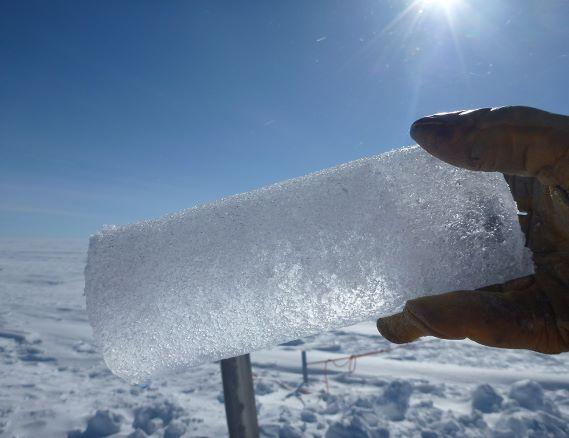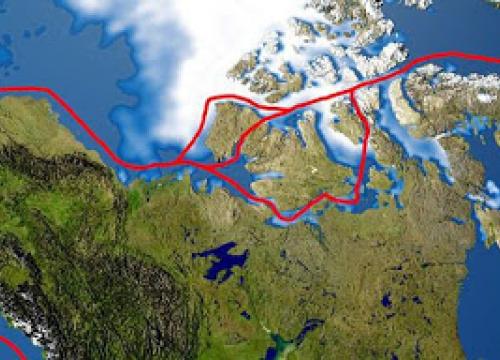Ice Core Demonstration: The Past is the Key to the Future
This lesson has students explore how the gases trapped in ice cores over the last quarter of a century can be used to understand how Earth's atmosphere has changed in the past.
Context for Use
Project EXTREMES lessons were intended to be stand alone lessons.

An ice core. Credit: NASA's Goddard Space Flight Center/Ludovic Brucker
Goals Header
What Students Will Do
-
Understand that snow forms into ice on glaciers and ice sheets via compaction.
-
Understand that air bubbles from the atmosphere that are present in the snow become trapped as the snow turns into ice and can be sampled 100,000's of years later.
Teaching Materials
User note: To make an editable copy of the teaching materials in Google Drive, select File > “Make a copy”. This will make a copy for you to save to your own drive and edit as you see fit.
Description
The students will come to understand how an ice core forms and how they are useful in looking at past atmospheric concentrations of carbon dioxide.
Activity 1 – Engage (5-10 minutes) Age of Trapped Carbon Dioxide
Show the students an image of ice core carbon dioxide data.
Activity 2 – Explore (5-10 minutes) Trapping Carbon Dioxide
Students make observations about snow in a sealable bag.
Activity 3 – Explain (5-10 minutes) From Ice in a Bag to Glacier Formation
Have a group discussion about students’ observations.




